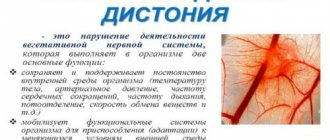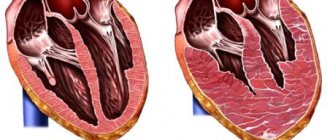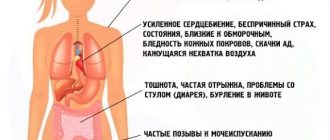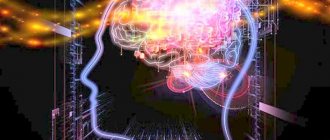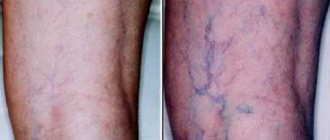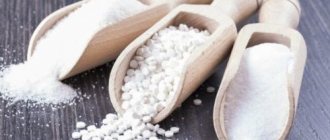Is there a treatment for VSD with folk remedies? No disease is accompanied by as many symptoms as vegetative-vascular dystonia (neurocirculatory dystonia). Sometimes a person suffering from this disease believes that his life is under threat, but vegetative-vascular dystonia is not a threat to health, and it is difficult to call it a disease.
VSD is a complex of symptoms that arise against the background of disruptions in the autonomic parasympathetic nervous system, which is responsible for the functioning of all organs, the circulatory and lymphatic systems, and the endocrine glands.
It is these disorders that manifest themselves in the form of many symptoms, from cardiovascular disorders to anxiety and panic disorders (panic attacks).
What is traditional treatment for dystonia?
Correctly selected folk remedy:
- eliminates nervousness;
- improves sleep;
- stabilizes blood pressure;
- normalizes brain function.
Select herbal preparations depending on the course of vegetative-vascular dystonia:
- In the hypotonic form of VSD, pay more attention to compounds that normalize blood pressure.
- People with a hypertensive type of disease are in greater need of blood pressure-lowering medications.
- For cardiac dystonia, choose recipes for strengthening the heart muscle and preventing heart rhythm disturbances.
Universal folk remedies for eliminating the symptoms of vegetative-vascular dystonia have a sedative and nootropic effect and improve the functioning of brain cells. Pay attention to cleansing the body and normalizing the functioning of the digestive organs. After all, the risk of developing another attack is reduced if there are no prerequisites for its development.
When choosing folk remedies for the treatment of VSD, consider how the disease progresses in your case, what symptoms come to the fore and whether there is a history of other diseases. A consultation with a herbalist will not be superfluous - he will help you understand all the nuances of treatment with herbs and other home methods.
Don't use herbs all the time. Even this type of treatment, so beloved by patients, is carried out in courses 3-4 times a year. Select the recipe so that its composition does not worsen your well-being, so in the first days of therapy, evaluate your complaints and the degree of their change.
There are many advantages to using traditional methods of treating dystonia:
- softness of the fees;
- lack of addiction and toxic effect;
- cost-effectiveness of treatment.
Do not rely only on “grandmother’s recipes” if the symptoms of the disease are felt vividly, disrupt your usual life, and prevent you from working normally and communicating with loved ones. With this course of VSD, first of all, get qualified help from a therapist or neurologist, who will select the necessary medications for the course of therapy, and only then start using herbal remedies and other methods of treatment.
Recommendations for VSD
No treatment will bring a positive effect until a person completely reconsiders his lifestyle. Treatment of the disease begins with daily walks in the fresh air and switching to a proper nutritional diet. When diagnosed with VSD, doctors recommend getting enough sleep, avoiding emotional overload and stress, giving up bad habits, and engaging in light sports.
Very effective treatment methods are:
- a ride on the bicycle;
- swimming;
- aerobics;
- gymnastics;
- Pilates;
- fitness.
Morning exercises, hardening, and breathing exercises are also useful during treatment.
Folk remedies with universal action
With all variants of the course of vegetative dystonia, sleep disorders, anxiety, and mood swings occur. Therefore, the help of folk remedies is required that will help stabilize the emotional background, improve the quality of sleep, and eliminate increased fatigue. Positive changes are observed when taking preparations containing herbs with sedative properties:
- Melissa;
- oregano;
- lavender;
- mint;
- chamomile;
- violet flowers.
Based on these plants, remedies are prepared to strengthen the nervous system.
Noli nocere! Or how not to harm yourself?
Consultation with your doctor
If you decide to seriously engage in the treatment of vegetative-vascular dystonia with folk remedies, remember the first medical commandment of Hippocrates: Noli nocere! Do no harm! Any herb or tincture that seems most innocuous at first glance may be contraindicated for you, or may increase the symptoms of VSD. In order not to harm your health using alternative medicine methods for vegetative-vascular dystonia, adhere to the following rules:
- Before starting treatment for dystonia with folk remedies, consult your doctor. Do not believe reviews on the Internet or your neighbor in the stairwell about the miraculous properties of this or that method. It is better to consult a doctor. The attending physician must be well aware of all your concomitant diseases, individual intolerance to a particular drug or product.
- Carefully remember if you or your immediate family are allergic to foods and herbs often used in traditional treatment: honey, bee products, St. John's wort, motherwort. If there is an allergy, treatment is strictly prohibited.
- If after starting treatment you notice a deterioration in your health or symptoms of VSD have intensified, consult a doctor immediately.
Evening soothing tea
Ingredients:
- lavender flowers;
- violet;
- barberry berries;
- medicinal veronica (widely grown in the European part of Russia);
- lemon balm leaves.
Take the components equally and mix. To brew tea, you need one spoon of the collection per glass of boiling water. Take the infused drink two hours before bedtime.
Diagnostics
To diagnose a pathology such as disruption of the body’s vegetative-vascular system, the doctor excludes other manifestations that may be indicated by symptoms. To do this, at the appointment the patient is interviewed, his lifestyle and anamnesis are studied. Then they carry out ECG monitoring, do an ultrasound or MRI of internal organs, as well as large vessels, take stress tests, and examine the functions of external respiration. Diagnostic techniques such as x-rays, dynamic blood pressure measurements, gastroscopy, and electroencephalography are also used. The doctor also prescribes laboratory tests, namely blood, urine and stool tests. Consultation with specialists such as a cardiologist, neurologist, or gastroenterologist may be required.
Strengthening collection
Required ingredients:
- leaves of St. John's wort;
- mint leaves;
- hop cones;
- valerian root;
- Melissa.
Mix the ingredients in equal quantities and store in a glass container. Prepare a decoction from a spoon of the mixture and a glass of boiling water. Strain the prepared healing drink after an hour and drink in small portions throughout the day. This remedy stabilizes the functioning of the nervous system and improves the body's protective functions.
vegetative-vascular dystonia is treated with herbs
- The product is infused for half an hour, after which it is filtered and can be used to treat VSD.
You should take a glass of the herbal tea three times a day. You can store the finished infusion in the refrigerator for no more than two days. The course of treatment is 20 days, after which there is a break of one week. A total of 4 cycles are required.Motherwort infusion is no less effective in eliminating the symptoms of VSD. It is prepared very simply: you need to pour one tablespoon of dried herb into a glass of water. After half an hour, the product is filtered and drunk throughout the day (it is best to drink the infusion in 4 doses).
- Being a well-known sedative, valerian perfectly eliminates the manifestations of vegetative-vascular dystonia, quickly normalizing the patient’s condition. The recipe is very simple:
- You need to prepare 200 ml of water and 15 grams of dried valerian root.
The grass is crushed and then poured with boiling water.
- The container is tightly closed (you can use a thermos), and then left for 12 hours in a warm place.
- The tea should be strained and then taken three times a day. In case of exacerbation of VSD, a double dose can be used.
This remedy is absolutely harmless to health and can therefore be taken for a long time. However, with its systematic use, an addictive effect on the body can develop, due to which it will lose sensitivity to the standard dose. To prevent this from happening, it is necessary to take periodic breaks from taking the drug for 14-30 days.
How to treat VSD with high blood pressure
Changes in pressure due to dystonia are not uncommon. If its level increases, the following medications should be used:
- Hawthorn berries (10 g) are poured into a glass of water at room temperature. After this, you need to put the product in a water bath for a quarter of an hour and cool. After filtering, take a tablespoon three times a day.
- Vitamin tea brewed from dried barberries, chokeberries, blueberries, and black currants has a good effect in treating manifestations of hypertensive VSD. To do this, take 2 teaspoons of the mixture and fill it with a glass of water. Use as regular tea.
- A tablespoon of magnolia leaves is crushed and then filled with alcohol. Next, you need to infuse the product for two weeks, sending it to a dark place. After this it is filtered. Take three times a day as follows: 20 drops of the medicine are diluted in 50 ml of water. The tincture allows you to stop attacks of tachycardia, reducing discomfort in the cardiac region.
How to treat VSD with low blood pressure
Low blood pressure can significantly reduce a patient's productivity. To normalize the condition, you must use one of the following recipes:
- Take 20 g of birch and blackberry leaves, 10 g of dandelion and 30 g of nettle. The mixture is poured with 250 g of boiling water and kept on fire for a minute. Next, you need to leave the product for about an hour and strain. Take before meals, three times a day, 2 tablespoons.
- 100 g of Rhodiola rosea roots are poured into 0.5 liters of vodka and sent to a dark place for a week. After this, take 10 drops of tincture diluted in water three times a day. The course of treatment is 2 weeks, but can be increased depending on the patient’s well-being.
- If hypotension is detected during VSD, then experts recommend brewing tea from angelica and St. John's wort, which perfectly tones and relieves unpleasant symptoms of the disease. To do this, dried angelica and St. John's wort herbs are taken in a ratio of 1 to 10 and used as tea leaves. The maximum dose is twice a day. The course of treatment is not limited.
At normal pressure
VSD can occur without changes in the normal tonometer readings. In this case, it is advisable to use the following recipes for treatment:
- Freshly squeezed carrot juice and rosehip tea are excellent drinks to get rid of the manifestations of VSD.
- 30 grams of dried elecampane root (pre-crushed) is poured with a liter of boiling water. After this, the broth should be boiled for a quarter of an hour, then cooled and strained. Take two tablespoons four times a day. Duration – month.
Other recipes
There are a number of folk remedies for the treatment of VSD that have an overall positive effect on the patient’s body:
- Tea with cognac. The product is an excellent remedy for headaches and dizziness that occur due to dystonia. Helping to tone the vascular walls, this medicine is taken in the morning after meals. To prepare it, strong black tea is brewed, to which a teaspoon of cognac is added.
- Treatment with beets. You need to take a medium-sized root vegetable, cut it into two halves and apply it to your temples. Hold for several minutes.
- Vegetable juice. It is good not only for VSD, but also useful for the whole body. The drink consists of a combination of carrot, beet and cucumber juices in a 3:1:1 ratio.
General tonic with pomegranate
Components:
- fresh leaves of young birch – 100 grams;
- 150 grams of Kalanchoe leaves;
- glass of water;
- 125 milliliters of pomegranate juice.
Fill the leaves of the plants with water and place in a water bath. 10 minutes after boiling, remove the saucepan from the stove and add pomegranate juice to its contents. Strain the product. Drink 1/2 glass in the morning for 10 days.
Herbal mixture with pomegranate restores mental activity and improves physical tone. When taking the collection as a course, blood circulation improves and the blood is cleansed.
Valerian - description of the drug
Valerian is available in the form of an alcoholic infusion (in dark vials) and in the form of tablets.
I always use an infusion, it seems to me more effective, so I will describe this form to a greater extent. Valerian belongs to pharmaceutical preparations of plant origin and has a sedative (calming), antispasmodic and vasodilating effect. The calming and relaxing effect is achieved due to the presence of alkaloids in the plant - hotenin and valerine. It is in this combination that the substances have a slight depressant effect on the human nervous system.
Valerian also has a mild antispasmodic and mild choleretic effect.
The therapeutic effect of the drug develops slowly, depends on the dosage and is stable.
Description current as of 02/18/2015
- Latin name: Valerianae extract
- ATX code: N05CM09
- Active ingredient: Valerian medicinal rhizomes with roots (Valerianae officinalis rhizomata cum radicibus)
- Manufacturer: Biosynthesis JSC (Russia)
The drug contains the active ingredient – thick valerian extract.
In addition, valerian tablets contain some additional substances: basic magnesium carbonate, sodium croscarmellose (primelose); potato starch, calcium stearate, gelatin.
Valerian extract is produced in the form of tablets for oral administration. The tablet may be yellow or brown. Valerian tablets are coated; the package may contain 10 or 50 tablets.
The drug is of plant origin. Wikipedia indicates that valerian officinalis is a herbaceous, perennial plant.
Its other name is cat grass, since it is well known how valerian affects cats. Cat grass, as valerian is sometimes called differently, causes a pronounced arousal reaction in felines.
The characteristics of the plant can be seen in the photo of valerian officinalis.
Valerian extract has a moderate sedative effect on the body. This effect is noted due to the presence in its composition of essential oil, the main content of which is an ester of isovaleric acid and borneol.
The components valerine and hotenin also have a sedative effect. As a result, a slow but stable sedative effect is observed.
Under the influence of the drug, inhibition processes in the cerebral cortex are enhanced. The synthesis and secretion of GABA at the synapses of cortical neurons also increases. This effect occurs only in the case of the total effect of substances that are part of valerian.
The extract helps facilitate the onset of natural sleep. Valeric acid and valepotriates have a weak antispasmodic effect. Also, the active substances of valerian provide a choleretic effect, activates the secretory activity of the gastrointestinal mucosa, slows the heart rate and dilates the coronary vessels.
The therapeutic effect is observed if treatment is carried out systematically and over a long period of time.
Valerian extract, due to the presence of actinidin in its composition, has an unusual effect on felines.
Answering the question why cats love valerian, experts note that the smell of actinidin is reminiscent of the smell of certain substances contained in the urine of cats.
There is little information about the pharmacokinetics of valerian extract tablets, since the active principle of the drug cannot be accurately identified.
After oral administration of 600 mg of dry valerian extract, the highest concentration of valerenic acid is observed after 1-2 hours. Pharmacokinetics does not change if the drug is taken repeatedly.
The use of valerian tablets is indicated in the following cases:
- high degree of nervous excitement;
- insomnia and problems falling asleep;
- migraine;
- vegetative-vascular dystonia;
- functional disorders of the cardiovascular system (as part of complex treatment);
- spasms of the gastrointestinal tract (as part of complex treatment).
Before taking valerian tablets for blood pressure or stress (before an exam, etc.), you must consult a doctor who will tell you how to take the tablets, how much to drink, and whether you should do it.
Before you start taking this remedy, you should know its medicinal properties and contraindications. You should not take the drug if you have the following conditions and diseases:
- high sensitivity to the components of the drug;
- fructose intolerance;
- lactase deficiency;
- sucrase/isomaltase deficiency;
- glucose-galactose malabsorption;
- first trimester of pregnancy;
- age up to 3 years.
Pregnant women should take into account the beneficial properties and contraindications and consult a doctor.
During treatment, the following side effects of the tablets may occur:
- lethargy;
- drowsiness and decreased performance;
- muscle weakness;
- constipation (if long-term use is practiced).
Sometimes side effects may develop in the form of allergic reactions.
The instructions for valerian tablets include taking 1-2 tablets three times a day immediately after meals. If necessary, the dose can be increased, but only under the supervision of a specialist. Treatment should last from 2 to 4 weeks.
The instructions for using valerian tablets provide for repeated courses of therapy if necessary. The dose should not be adjusted for people who have impaired liver or kidney function.
How to take other types of medicine (Bulgarian valerian, brown valerian, etc.) should be checked with the doctor who prescribes the treatment.
The doctor prescribing the treatment regimen should tell you how to take valerian tablets for a certain disease.
The consequences of an overdose of valerian tablets are the manifestation of drowsiness, muscle weakness, lethargy and other signs of depression of the central nervous system.
In case of severe overdose, bradycardia and arrhythmia may occur. As a rule, such symptoms appear when taking large doses of the medicine (doses 20 times or more higher than usual).
However, how many tablets cause such phenomena is individual for each person. The instructions do not indicate a lethal dose of the drug. Whether you can die after a severe overdose depends on the person’s health.
In case of overdose, you should immediately stop the drug, perform gastrointestinal lavage, give the patient activated charcoal, as well as magnesium sulfate to prevent intestinal absorption of substances and cause a laxative effect. There is no specific antidote.
Valerian extract in tablets can enhance the effect of sedatives and hypnotics, and enhance the effect of antispasmodics.
Before taking valerian tablets, you must inform the doctor about all the drugs that the patient is using for treatment in parallel.
You can buy valerian extract without a prescription.
It is necessary to protect the tablets from access by children; store them in a dry place, and the temperature should be 12–15 °C.
Tablets can be stored for 5 years.
You should clearly read the instructions before taking the product in order to compare the benefits and harms of taking the product in each specific case.
If the tablets are used over a long period of time, the effect on a person may lead to a decrease in psychomotor reactions. How long it takes for the drug to act in this way depends on the individual characteristics of the body.
When taking the medicine, you should take into account how valerian acts on a person, so you need to carefully drive vehicles, as well as perform other actions that require accurate reactions.
Another name for the plant is cat grass, as it is called because valerian causes a specific effect on animals. Many people are interested in whether valerian is harmful for cats.
You can find out why cats like this medicine by studying its composition. Why the medicine acts this way is explained by the presence of the substance actinidin in its composition.
As a rule, cats behave in a special way after valerian. But, answering the question whether it is possible to give a dog or whether it is possible to give a cat valerian, it should be noted that sometimes veterinarians even prescribe this drug to cats in small doses in order to increase vitality.
Unlike people, cats are not sedated by this remedy. There have been cases where an overdose led to the death of an animal. Sometimes the lethal dose for a cat is a relatively small amount of the drug, so it is advisable not to keep the tablets in places where animals have access.
If valerian is given in tablets to dogs, the product can provoke allergic reactions in the animal.
Pharmacies sell a wide variety of valerian-based medications. In particular, these are Valerian P, Himalayan valerian, Bulgarian valerian, etc. There are also a number of drugs with similar indications.
Which is better - Valerian or Motherwort?
When answering the question of which is better - valerian or motherwort, it should be taken into account that the effect of motherwort on the human body is almost the same. However, in the treatment of neuroses and cardiovascular diseases, a more pronounced effect is observed when taking motherwort.
Those who are interested in whether this remedy increases or decreases blood pressure should take into account that when taking motherwort, blood pressure levels decrease.
When discussing whether this drug can be given to children, it should be noted that valerian can be prescribed to children only according to a doctor’s indications and taking into account age. Tablets are strictly contraindicated for children under 3 years of age; for children under 12 years of age, the dosage can only be prescribed by a specialist.
You should definitely consult with your pediatrician about what valerian is used for, how it affects children, how to take the drug, and whether valerian is harmful in each specific case.
When discussing the compatibility of this drug with alcohol, it should be taken into account that when taking alcohol and tablets simultaneously, mutual potentiation of the effects is observed.
As a result, there is pronounced inhibition of the central nervous system. Therefore, it is not recommended to practice this combination.
Whether pregnant women can take valerian preparations depends on the period of future pregnancy. Valerian tablets are prohibited during pregnancy if the 1st trimester has passed. For pregnant women in later stages (2nd trimester, 3rd trimester), the drug is approved according to strict indications.
Rosehip tincture
To prepare the medicine, place two tablespoons of dry or fresh rose hips in a thermos and pour two glasses of boiling water. Do this in the evening. In the morning, strain the infusion. Add honey if desired. Take rosehip infusion 3 times a day in small doses: half a glass at a time.
Rose hip:
- strengthens the nervous and immune systems;
- increases the body's resistance to viruses and harmful bacteria;
- has a mild hypotensive effect.
The decoction is also useful for hypotensive patients, but they are not recommended to drink more than one and a half glasses a day.
Valerian is not suitable for everyone suffering from VSD
I think that you are unlikely to be able to feel the effect of valerian during VSD and panic attacks if your head is in complete chaos, you cannot control your thoughts at all and do not know the basics of how the psyche works. No, I don’t want to say that you are stupid and will not get out of your neurosis. Don't take my expression negatively. I want you to understand that by changing your consciousness, you will change your physiological state.
It is not necessary to hire an expensive psychotherapist. Read great books on how to heal yourself. Start getting organized in your head, because that's where the problem lies.
In my life, I have already experienced the experience of self-healing of organic diseases twice. In the first case, I used only NLP techniques and got rid of a 7-year pathology in 10 days. In the second case, the illness was serious and I took medication, combining it with somopsychotherapy and NLP. My doctor was amazed that I recovered so quickly. As a result, we successfully cured the disease.
In the latter case, Joseph Murphy’s book helped me a lot; it was from there that I took scientific prayers for healing that work 100%. Of course, provided that you believe in such techniques. Because it is faith that is the driving force on the path to any goals and desires.
Even if you believe without a shadow of a doubt that Valerian will cure you of VSD, it will be so.
Red wine tincture
Ingredients:
- high-quality red wine or Cahors – 350 ml;
- 250 grams of fresh, preferably May, honey;
- 150 ml aloe juice.
Prepare the aloe leaves properly first. Do not water the plant for at least 5 days, then cut off the leaves, place in a plastic bag and put in the refrigerator for a week. Such preparation of raw materials greatly increases the content of biologically active substances in it.
After aging in the refrigerator, squeeze the juice out of the agave. Mix the juice with the remaining ingredients. Place the container for 10 days where the temperature does not exceed 8 degrees.
Filter the prepared infusion. Carry out treatment for 15–20 days, taking the drug one tablespoon before meals 3-4 times a day. Wine remedy:
- has a general strengthening effect;
- relaxes;
- has a positive effect on the nervous system.
Clinical picture of VSD
It is important to know!
This disease is most typical only for young people. Mostly children, girls and boys are affected. More often the disease occurs in females. These facts are explained by the great lability of the nervous system in children and adolescents and pronounced hormonal changes in the female body during puberty (during puberty).
The following symptoms are characteristic of vegetative-vascular dystonia:
- increased sweating;
- marbling of the skin (especially on the palms);
- the appearance of red spots on the neck during excitement;
- pain in joints and muscles at rest;
- rapid heartbeat during stress or constant tachycardia, which is always absent during sleep;
- heat intolerance (bath, sauna, any stuffy rooms, public transport);
- headaches and dizziness without any reason;
- decrease in heart rate below 60 beats per minute during sleep;
- causeless rises and falls in blood pressure;
- various, causeless pains in the heart area.
It should be noted that this is not a complete list of manifestations of this disease, and it is very rare for patients to have just one symptom. Most often there is a combination of them. This is why such great variability makes diagnosis very difficult.
Doctors, first of all, try to rule out serious problems with the heart or brain, and only then think about a more favorable pathology. It may take a long time for a doctor to arrive at a correct diagnosis, especially considering the fact that it is simply impossible to confirm VSD with any specific laboratory test.
Herbal baths
For vegetative neurosis, baths with the addition of herbal extracts or essential oils are useful. For such procedures to be beneficial, several conditions must be met:
- the bath should not be taken for more than 20 minutes;
- the optimal water temperature in it is 37 degrees;
- herbs are selected depending on how you feel.
For vegetative-vascular dystonia, it is recommended to periodically add decoctions to the bath:
- valerian root;
- oregano;
- lavender;
- lemon balm;
- mint.
Consider your feelings - the smell of the plant should not irritate, as this will lead to increased nervousness.
Herbal decoctions for baths can be replaced with essential oils; add them to the water in the amount of 3-5 drops. For an evening bath, ethers that have a mild sedative effect are suitable - sweet marjoram, lavender, jasmine. Extracts of coniferous plants have a general strengthening effect.
Vegetovascular dystonia in adults: causes and symptoms
Nothing is still known about the true causes of the disease. Here are the main factors that provoke VSD:
- Disruptions in the hormonal system - pregnancy, taking hormonal medications, breastfeeding, menopause, puberty, etc.;
- Chronic endocrine diseases;
- Adverse habits – use of drugs, alcohol, smoking;
- Traumatic brain injuries;
- Passive lifestyle;
- Frequent stress, emotional stress;
- Chronic lack of sleep;
- Diseases of the central nervous system;
- Spinal diseases.
The main factor leading to the development of VSD is the loss of tone in the blood vessels of the brain, which leads to the inability to control the narrowing and dilation of arteries by the autonomic nervous system.
Important! Most often, adolescents are susceptible to the disease, since it is during puberty that hormonal changes in the body occur, and the nervous system is most labile at this time.
Symptoms of VSD are quite varied. Therefore, it is very difficult for a person to independently diagnose VSD.
The main symptoms in adults with vegetative-vascular dystonia in the acute stage:
- dizziness;
- blood pressure surges;
- cerebrovascular accident;
- drowsiness;
- nausea, abdominal pain, flatulence, frequent bowel movements;
- heartache;
- dyspnea;
- increased sweating;
- discomfort in muscles and joints;
- heat intolerance;
- cold extremities.
But the most terrible symptom of VSD is panic attacks that overwhelm a person at any moment. A person feels a strong heartbeat, lack of air, rapid breathing, a sharp jump in blood pressure, and nausea.
Folk ways to prevent attacks of VSD
It is also possible to prevent attacks of vegetative-vascular dystonia using traditional medicine. Such treatment should be carried out on the basis of one or more of the following recipes:
- Beetroot-carrot-cucumber juice in a ratio of 1:3:1. Drink 1 glass of the drink daily in the morning.
- Decoction of St. John's wort and lemon balm: 1 tbsp. l. Pour 500 ml of boiling water over each dried crushed plant and let it brew for 2-3 hours, strain. You need to drink 100–150 ml of the drink daily.
- Mint tea: 1 tbsp. l. Pour 1 cup of boiling water over dried mint leaves, let steep for 30 minutes, strain. Take 1 tbsp three times a day. l.
- Infusions of hawthorn, valerian, motherwort: 1 tbsp. l. plants (one of your choice) pour 1 glass of boiling water, leave for 3-4 hours, strain. Take any of the infusions, 2 tbsp. l. daily before each meal.
- Ginseng tincture: 20–30 g of dried crushed plant, 500 ml of boiling water and 500 ml of vodka, leave for a week. Use 1 tbsp. l. After dinner.
Treatment of VSD with these drugs is effective due to the positive effects of traditional medicines on the central nervous system, increasing the body's endurance, improving sleep and relieving tension.
Effective methods of combating VSD are various physical exercises and breathing exercises. The most common techniques among them are the following:
- Alternate inhalations and exhalations with changing nostrils (inhale through the left, exhale through the right, and vice versa). Do the exercise daily for 2–3 minutes.
- Gradual filling of the abdomen with air, then the chest, then the collarbone area. The exercise should be performed in a standing position, gradually rising on your toes as you inhale. You need to exhale in the same order - deflate the stomach, then release the chest area and the upper part of the lungs, gradually lowering from the toes. Repeat 8-10 times every day.
REFERENCE! These techniques allow for comprehensive treatment. With regular exercise, changes will be noticeable within 2 weeks: improved cerebral circulation, normalization of heart rate, restoration of breathing, stimulation of blood vessels.
Also, complex therapy that helps prevent panic attacks during autonomic dysfunction includes various types of physical activity, including:
- Swimming helps relieve stress and improve muscle tone.
- Race walking (but not running!) in the fresh air helps increase resistance to external factors and normalizes breathing.
- Cycling can improve immunity and stabilize blood pressure.
- Morning exercises have a positive effect on your well-being and give you energy for the day.
- Yoga and gymnastics provide an opportunity to strengthen muscles, normalize breathing and gain mental balance.
ATTENTION! During training, it is important to monitor your breathing and well-being. There is no need to overload the body. Heavy sports for patients with dystonia are most often prohibited.
Aromatherapy is also included in non-traditional folk remedies for VSD. The use of essential oils allows you to relax, calm the nervous system, and get rid of stress. Aromas have a beneficial effect on overall health, normalize sleep, and help cure insomnia. The procedure can be carried out using an aroma lamp, while performing a massage and taking a bath. It is better to choose the following oils:
- for high blood pressure: marjoram, lavender, ylang-ylang;
- for low blood pressure: mint, rosemary, black pepper;
- for sleep disorders and neuroses: bergamot, lemon balm, sandalwood, chamomile;
- for stress and depression: geranium, coriander, jasmine, patchouli.
Massage, both with and without essential oils, is essential to reduce the risk of panic attacks. The areas of massaging movements during VSD are the cervical spine and the upper third of the back.
Only a qualified specialist should perform a massage. Then, with regular procedures within 2 weeks, results will be noticeable - tension will disappear, blood circulation will improve, the functioning of the central nervous system will normalize, headaches will occur significantly less frequently, and brain activity will increase.
A separate type of therapy to prevent attacks of dystonia is acupuncture (also known as reflexology or acupuncture). The essence of the procedures is the use of special thin needles by a specialist. He places them for a certain time at special active points in which nerves and blood vessels are connected. Acupuncture provokes a reaction in the body that helps normalize the functioning of a certain internal organ. Also, the acupuncture procedure has a beneficial effect on the immune system, stimulates blood circulation and metabolism, which has a positive effect on health in the presence of VSD.
REFERENCE! Diet changes play an important role in the treatment of VSD. It is important to compensate for the lack of vitamins and other nutrients by regularly consuming fruits, vegetables, legumes and grains.
In addition, it is recommended to increase the amount of liquid you drink per day, and you need to drink in small sips. The morning and every meal should begin with a glass of clean water, which promotes better absorption and supply of the body, in particular the nervous system, with important components to maintain tone and prevent attacks.
Tibetan methods of treating VSD
Tibetan doctors have long been famous for their unconventional approach to treating a wide variety of diseases. They also paid attention to vegetative-vascular dystonia.
Recipes allow you to get rid of such manifestations of VSD:
- astheno-nerotic syndrome;
- panic attacks;
- fainting states;
- changes in blood pressure;
- headaches.
In order to achieve harmony with the environment (this is the basis of Tibetan healing), it is necessary to use special breathing exercises, acupuncture, manual therapy and herbal treatment.
The sages advise using this recipe:
- mix 100 grams of each ingredient in one container: birch buds, immortelle, St. John's wort and chamomile;
- Pour a tablespoon of the resulting mixture into a thermos;
- add 0.5 liters of boiled water to it;
- leave to infuse for 4 hours;
- remove the grass by straining the composition through cheesecloth;
- Drink part of the composition in the evening, finish the other in the morning (you can flavor the liquid with honey).
Contraindications
Before using decoctions and infusions based on medicinal herbs, it is recommended to consult a doctor to be sure of the accuracy of the diagnosis. Some plants can cause allergic reactions or complications in other organs. Therefore, it is advisable to familiarize yourself with contraindications for specific herbs before consuming them. Traditional medicine should be used with caution when treating children, pregnant and nursing mothers.
Rating 0.00 (0 Votes)
Clay treatment
Clay allows you to remove toxins outside the body; it will not be superfluous in the treatment of VSD.
To reduce the severity of dystonia, it is recommended to use a clay solution for 7 days (where 1 tablespoon of powder is dissolved in a glass of water). Every day you need to reduce the concentration of clay powder in the water so that on the last day there is only 1 tsp in the water.
It is preferable to purchase clay from a pharmacy chain, because a substance found independently is unlikely to be cleared of foreign impurities.

